Shanghai to Hong Kong by Overnight Train
After living 3 months in Shanghai I had to leave the country to get a new visa. The closest and cheapest destination is Hong Kong. Even so, it’s not really close: a 2-hour flight or a 21-hour train trip. That’s much further than I have to travel for visa runs between Thailand, Malaysia and Singapore.
When living in Thailand I can complete a visa run as a day trip to the border of Malaysia and back. In contrast, the visa run trip from Shanghai to Hong Kong, by train, would take a week including 4 days of visa processing.
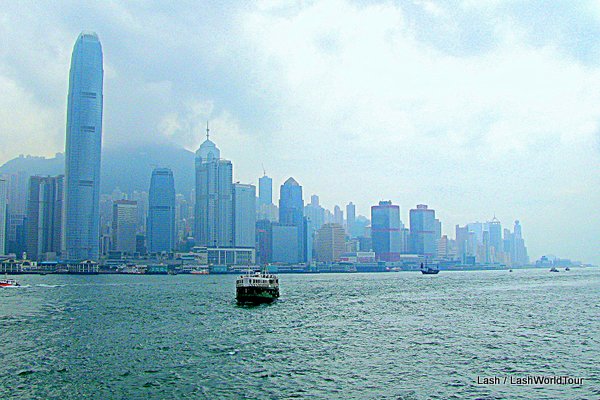 Hong Kong actually is part of China, ever since it was handed back to China by the British in 1997, when their 99-year lease expired. But as far as immigration and visa formalities, entries and exits go, HK is treated as a separate country. HK is referred to as SAR- Special Administration Region. In any event, I was going there to get my next Chinese visa.
Hong Kong actually is part of China, ever since it was handed back to China by the British in 1997, when their 99-year lease expired. But as far as immigration and visa formalities, entries and exits go, HK is treated as a separate country. HK is referred to as SAR- Special Administration Region. In any event, I was going there to get my next Chinese visa. I opted to take the overnight train, a 21-hour journey. Our clients, at the hair salon where I was working, looked at me as if I were crazy for taking the train to HK when I could get a 2-hour flight instead. Nobody else I’d met in Shanghai had ever taken an overnight train in China.
I opted to take the overnight train, a 21-hour journey. Our clients, at the hair salon where I was working, looked at me as if I were crazy for taking the train to HK when I could get a 2-hour flight instead. Nobody else I’d met in Shanghai had ever taken an overnight train in China.
However, I love overnight trains. I love sleeping in a moving, over land vehicle. I find the motion and sounds of a train very soothing and comfortable. That probably stems from my childhood experiences sleeping in the back of my family car on long camping trips across the USA.
I also love watching the countryside, landscapes and topographies drift past the windows. I was really looking forward to a long overland journey.
Of course the train is also much cheaper than a flight: about 2-4 times cheaper, depending what flight you can find. The train costs about $60 US each way. Considering I was only going to HK in order to get a 1-month visa to return to China, $120 RT was already too much to spend, especially on top of the $US 140 visa fee.
Although the train cost is reasonable for a 21-hour overnight sleeper, it’s still very expensive compared to the Thai and Malaysian trains. In those countries, for a somewhat shorter overnight trip of about 15 hours between major cities, I usually pay around $15 US for a comparable sleeper train.
As for the Chinese train to HK, I did have some questions: Would it be dirty? Would I have to worry about theft? Would it be super noisy with yelling Chinese and/or children? Would it be ‘refrigerated’ with a/c like the Malaysian trains? Or warmer with comfy fans like the Thai 2nd-class train cars? Would there be edible food on-board?
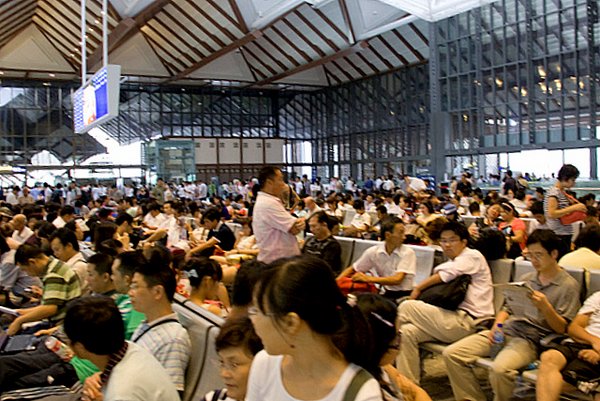 I arrived at the train station 1 1/2 hours early, which was good because there was already a very long line. We all had to pass through Chinese immigration there in Shanghai, our point of departure, before boarding the train.
I arrived at the train station 1 1/2 hours early, which was good because there was already a very long line. We all had to pass through Chinese immigration there in Shanghai, our point of departure, before boarding the train.
That is entirely different from the Malaysian/Thai trains where you pass through immigration of both countries at the actual border. In any event, we gradually got through immigration and onto the train.
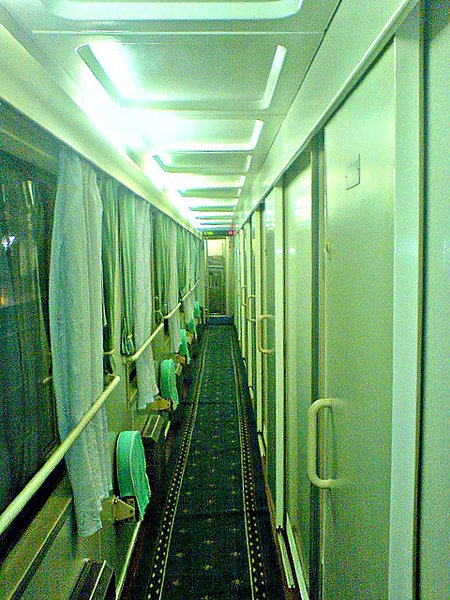 Surprise, surprise, the train was immaculate. Even a bit posh. The hallways and ‘rooms’ were carpeted. Crisp white linens covered the small tables and beds. Each bed had a big fluffy pillow and thick comforter. Even the sinks and toilets were very clean. I was amazed.
Surprise, surprise, the train was immaculate. Even a bit posh. The hallways and ‘rooms’ were carpeted. Crisp white linens covered the small tables and beds. Each bed had a big fluffy pillow and thick comforter. Even the sinks and toilets were very clean. I was amazed.
In addition, there was a hot water dispenser for use making tea, instant noodle soups and so on. Each ‘room’ also had a thermos and trash can.
The only bad point for me was the frigid a/c. Ahh well, I just had to bundle up in lots of clothes and my comforter.
The train was divided into door-less ‘rooms’ along the hallway. In the ‘hard-sleeper’ cars like mine, each room had 6 beds- two 3-tiered bunk beds. I don’t think I’ve ever seen 3-tiered bunks before.
To get up into the middle and top beds little foot-sized metals steps, fold-down style, were set in the wall near the doorway. I didn’t have to worry about that since I had a bottom bed.
Out in the hallway were little fold-down cushioned chairs and small tables beside the large windows. It was easy to watch the countryside roll by. The entire train was very comfortable, aside from the frigid temperature.
The train also had more upscale ‘rooms’. There were ‘soft sleepers’ with 4 bed per room and private rooms with 2 beds plus a chair and sink- private mini-suites. I was perfectly comfortable in the 6-bed rooms.
 As for my fellow passengers, I was very happy that they were rather quiet, talking at normal voice levels. Almost. One of our 6 cabin-mates, a senior citizen, arrived packed with a bundle of plastic bags and YELLING continuously.
As for my fellow passengers, I was very happy that they were rather quiet, talking at normal voice levels. Almost. One of our 6 cabin-mates, a senior citizen, arrived packed with a bundle of plastic bags and YELLING continuously.
She promptly covered our entire table with her mound of bags-food. She sat down, chattering away, VERY LOUDLY. Uhh-ohhh! I decided to put an end to that immediately. I shhh-ed her, covered my ears, and asked her to talk more quietly. No way was I enduring a 21-hour train ride with a YELLER beside me.
Luckily for me, she obliged, apologized, and actually spoke quietly the entire trip.
Equally lucky, there weren’t any other yellers nearby, nor any children. Hallelujah! On every one of my Thai and Malaysian train trips I seem to be cursed with noisy children surrounding me. This Chinese train was heaven.
Two of my room-mates spoke English, so I chatted with them a few times. They also tried to help me out, announcing when the food cart was approaching and so on.
One oddity: the Chinese trains do have a very strange, inexplicable, ticket system on-board. Soon after the train gets rolling, train conductors come around checking tickets. That’s pretty standard.
(Even though we’d already had to show our ticket three times: to get in the station, to get through immigration, and to get onto the train. Clearly, everyone on board has a ticket.)
But what is especially unusual is they collect every passengers’ tickets, put them in a big notebook full of ‘ticket pockets’, organized by room, and then issue each passenger with a plastic card? Passengers have to show i.d. and the conductors write their names down.
At the end of the journey, just before arriving in HK, the conductors come around again to collect the plastic cards and give back the original tickets. Eh?!?#@#@^&??
I couldn’t figure out what the heck that could be for, especially considering the train doesn’t make any stops between Shanghai and HK. No passengers got on or off en route. So, what’s with the ticket holding?
It’s still a complete mystery to me. One passenger told me it was for ‘security’ but had to admit that it didn’t really make any sense.
In any event, our train departed Shanghai on time, and we were on our way. That’s actually another surprising aspect about Chinese trains- they are punctual. They depart on time and arrive on time.
I had expected the Chinese system to be much less efficient. I had also become accustomed to the Thai and Malaysian trains, which may or may not depart on time, but are inevitably late arriving, typically 1 to 3 hours. Chinese trains, I discovered, are more like Japanese trains- extremely punctual and clean.
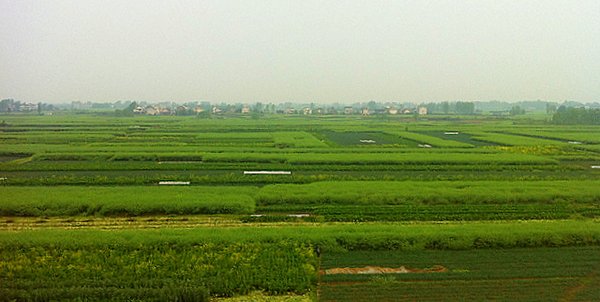 So, we were on our way to HK… We exited urban Shanghai and entered rural countryside surprisingly quickly. Almost immediately we were surrounded by fields. I only had about 2 hours to view scenery before dark. Those 2 hours we rolled along through completely flat land, mostly fields, interspersed by fairly large cities jam-packed with concrete apartment buildings.
So, we were on our way to HK… We exited urban Shanghai and entered rural countryside surprisingly quickly. Almost immediately we were surrounded by fields. I only had about 2 hours to view scenery before dark. Those 2 hours we rolled along through completely flat land, mostly fields, interspersed by fairly large cities jam-packed with concrete apartment buildings.
I saw some exceedingly strange architecture. One area was full of buildings topped by a single round turret, like a castle. I imagined that one person had built a house with a turret. Everyone around decided that it looked cool, so they copied him, and soon that entire area of China was full of square houses and apartment buildings topped by a turret. “Keep up with the Jones”.
The turrets just looked ridiculous, completely out of place, on top of a square building. Some turrets were topped by tall metal rods, often with metal balls on them- lightening poles or decorations, I presume. It was quite amusing to see an entire regioin of China filled with little turrets poking into the sky.
 I also saw checkered buildings. And some very strange mixed architectural detailing and tiling. Besides the oddities, though, I did get to glimpse a few traditional villages in rural areas beside streams and at the base of hills.
I also saw checkered buildings. And some very strange mixed architectural detailing and tiling. Besides the oddities, though, I did get to glimpse a few traditional villages in rural areas beside streams and at the base of hills.
Just before dark the countryside became hilly then mountainous. Thick foliage covered the hills. Water was abundant- rivers, canals, and ponds. Very scenic and peaceful… ahhh, nature! I slept well on the train with my fluffy pillow and comforter.
The next morning I had plenty of time to watch the countryside roll by. I woke up around 7 am and our train arrived in HK at 1:30pm. Six hours of scenery! Most obvious that morning was the fog. or mist?
We were passing through more of rural China: hills, rivers and canals, small villages, all wrapped in heavy fog. Surprisingly, there weren’t any people out in the fields. Nor many animals.
I wasn’t sure why it was so foggy until we eventually came to a city- the streets were wet. It had been raining. Maybe that’s also the reason nobody was outside? And it was Sunday. Perhaps even Chinese farmers take Sundays off?
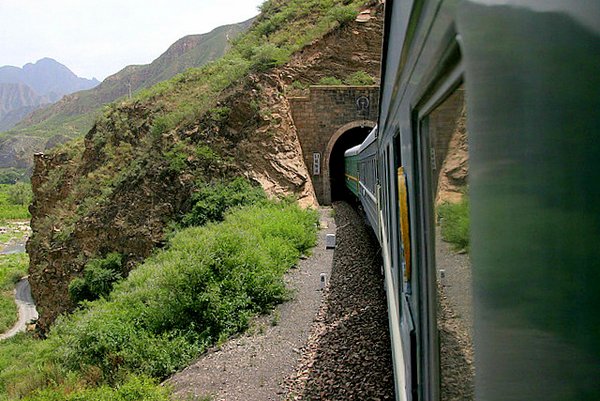 We passed through many many tunnels. Some were really really long. I’m sure I passed through my longest tunnel ever. The train was moving through that tunnel for at least 10 minutes.
We passed through many many tunnels. Some were really really long. I’m sure I passed through my longest tunnel ever. The train was moving through that tunnel for at least 10 minutes.
In the middle I saw loads of machinery and workers. Were they fixing the tunnel? Or MINING? It certainly looked like mining activities. Strange to roll past mining equipment in a tunnel on a passenger train.
The train continued through pretty countryside, hills and tunnels until we reached the huge city of Guangzhou, which is about 2 hours inland from HK. This area has been booming with industry in the past decade or so.
Besides Guangzhou, there’s one other big city, Suzhou, on the coast, just across the bay from HK. Between Guangzhou and Suzhou I had expected un-ending city, so was surprised to find more rural areas. The urban sprawl hasn’t completely taken over yet.
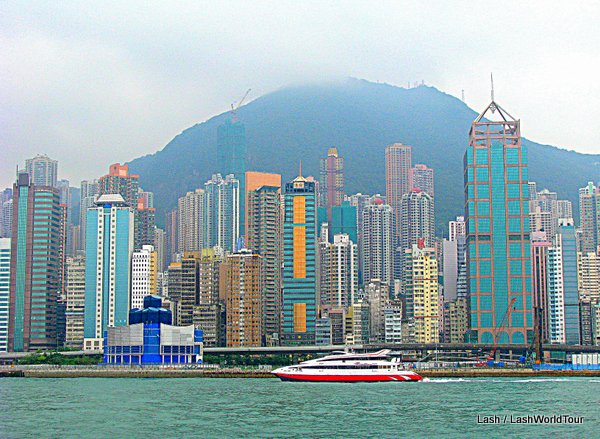 But soon enough I found myself in HK. I got off the train, passed through HK immigration, and heading out to explore Hong Kong. And, of course, to get my visa to return to China.
But soon enough I found myself in HK. I got off the train, passed through HK immigration, and heading out to explore Hong Kong. And, of course, to get my visa to return to China.
(* Flickr Creative Commons photo credits: poelog / sara depper / r h / btaroli / clgregor / liddybits / yakobusan / bfishadow )
————————————————————————
QUESTIONS:
Have you ever taken a train across China? If so, were your experiences similar or different from mine?
Where have you taken a great train ride?







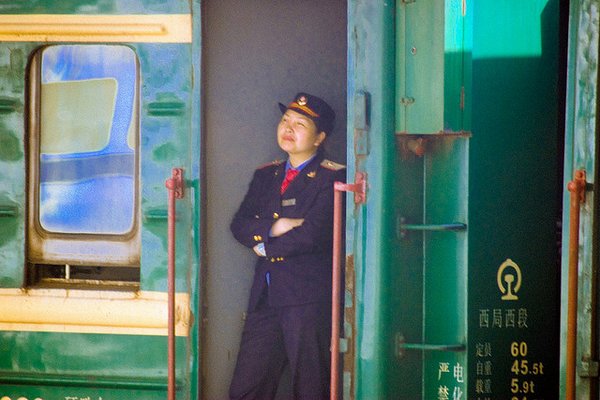
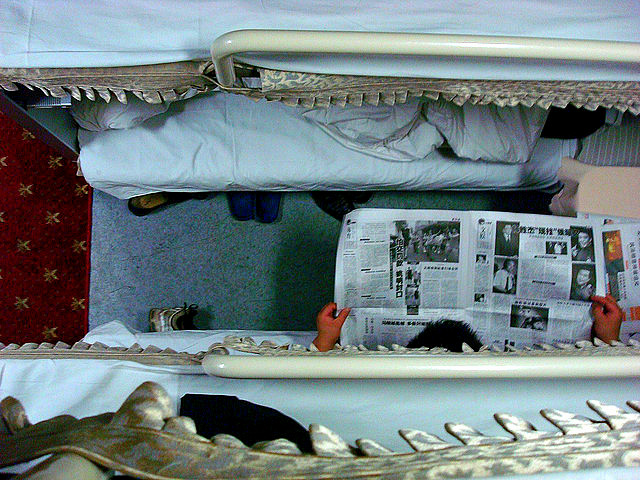
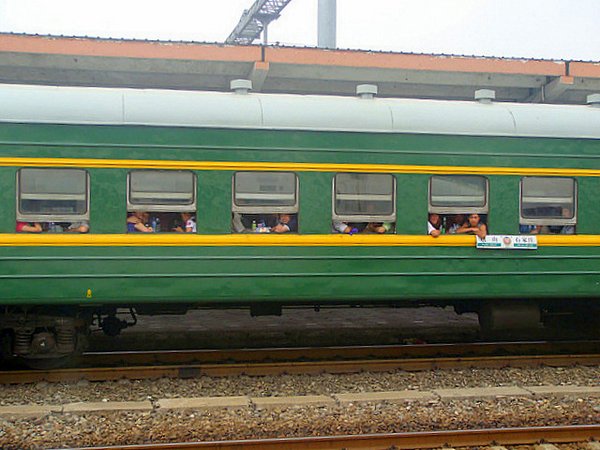

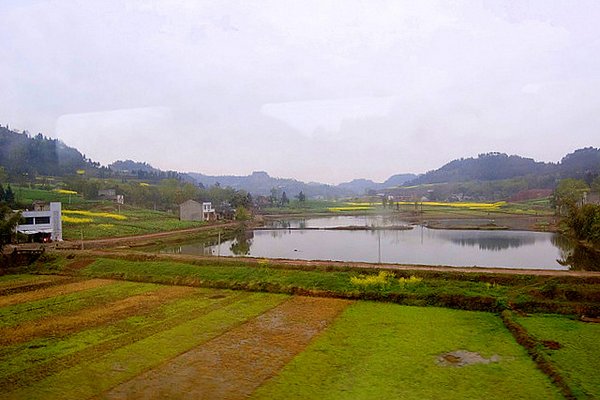
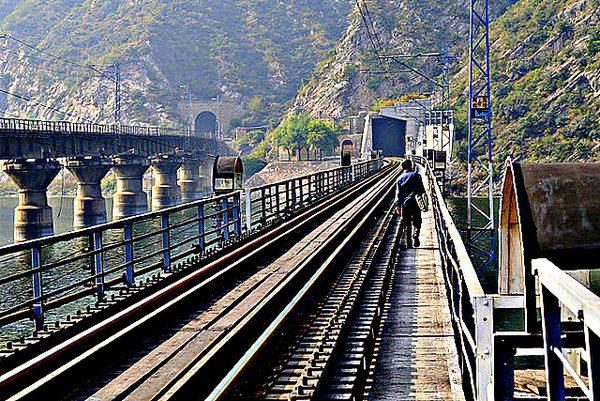




 Hi! I'm Lash, an American nomadic world traveler who's been traveling solo since 1998. I’m passionate about traveling the world nomadically and then sharing it all with you. I hope to inspire you to travel the world, to entertain you with tales from the road, and to help you reach your travel dreams. Welcome!
Hi! I'm Lash, an American nomadic world traveler who's been traveling solo since 1998. I’m passionate about traveling the world nomadically and then sharing it all with you. I hope to inspire you to travel the world, to entertain you with tales from the road, and to help you reach your travel dreams. Welcome! 




10 pings
Skip to comment form ↓